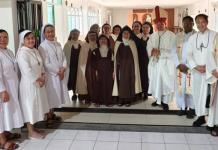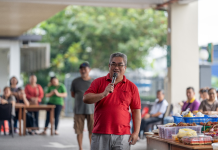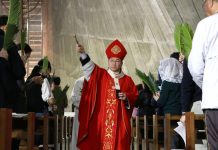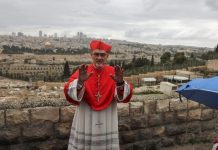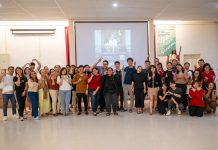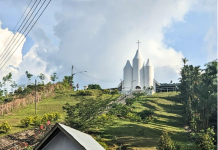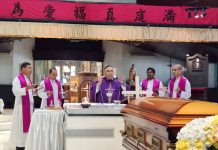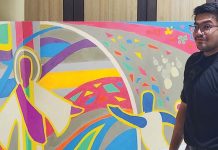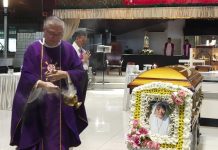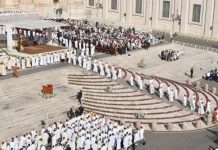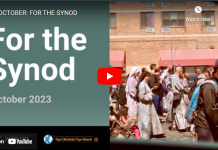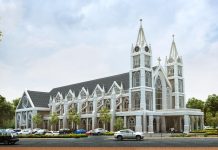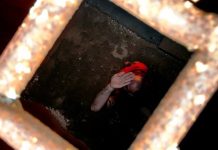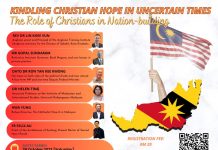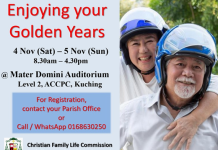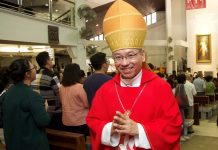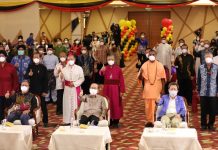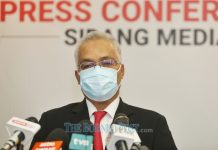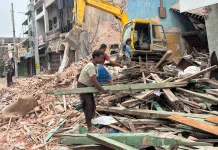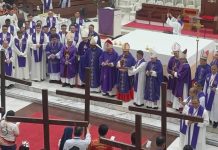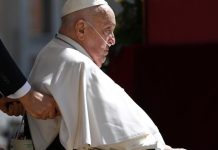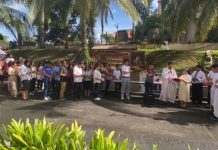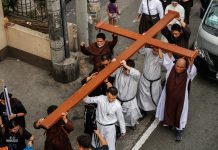Stranded climbers used their mountain guides’ shoulders to step on to save themselves after an earthquake measuring 6.0 shook Sabah on Friday, 5 June. Australian climber Vee Jin Dumlao called his guide, Jomius Binte, a Catholic, a hero. Jomius led two climbers down, one from peninsular Malaysia, and Ms Dumlao of Australia, after the earthquake struck.
Seconds before the tremor, they were on the South Peak taking pictures. The first tremor occurred and lasted for about five to six seconds, and it sounded like thunder. It was then that Jomius saw the top of the ‘Donkey Ears’ Peak break off. Fog shrouded the area, followed by the sound of a very loud crack.
Jomius, who hails from Kampung Kinasaraban, Kundasang, shares the anxious moments when the mountain guides decided to execute a rescue mission to save the climbers who were stranded on the summit of Mount Kinabalu.
“The first tremor happened while we were on the way down from Low’s Peak, the Summit. Other climbers screamed as they felt the tremor. The climbers under my care ran towards me. Everyone was running but when we reached the area called “Danger area”, the trail was blocked and covered with rocks. These falling rocks killed some of the climbers and mountain guides who were on their way down.
“Then, we gathered all the climbers in an open space and contacted the authorities. At that time, we had 105 climbers, 29 mountain guides, a ranger and two porters. About 3.00 pm, the weather was good and sunny. We then tried to contact the fire brigade for rescue but were informed that the rescue team would only be sent the next day.
“Hearing this, the mountain guides discussed the best solution for the people under their care. If we waited for help to come, the stranded climbers would not be able to handle it due to the cold temperature. Furthermore, they had only had a light breakfast at around 1.00 am the previous day before the climb. We were surviving on bottled water that we had from Sayat-sayat but we already had two climbers who were ill.
“At around 4.30 pm, we decided to lead the climbers down. For the first part of the journey, we put the climbers in front while the mountain guides followed from behind, to ensure that no falling rocks would hit the climbers. Thank God, there were no more rocks falling at that time.
“When we arrived at the Sayat-sayat rest stop, the ropes leading the way down were missing, destroyed as a result of the quake. Four mountain guides took some of the spare ropes and went on ahead to set up a new line. We then instructed the climbers to walk in a line with a mountain guide between every three or four climbers. The cooperation of the climbers made it easier.
“The descent was difficult as the trail was unsafe and the rocks were not stable. So, we mountain guides used our shoulders for the climbers to step on. There were some we had to carry as they were in panic and fear. I kept encouraging them not to lose heart, especially when they saw a few dead bodies along the way. We managed to make sure they did not step on loose rocks and constantly reminded them not to lose focus while descending the slope.
“Upon arriving at the KM6.5 pit stop, we found that the mountain guides from Kundasang, Kampung Kiau and Bundu Tuhan around 70 of them, had come and set up ropes to rescue us. They also helped us with the wak and the injured. They were the ones who helped to bring those who perished from the mountain top down to Laban Rata.
“From this pit stop, we continued our downhill journey to Pondok Timpohon, where the rescue team was waiting.
“I thank God for His protection and guidance for the climbers and mountain guides. For the victims, I feel sad, especially for the four mountain guides who perished but I am proud of them.“
Pierre Kee
Adapted from the article published in the Herald, 21 June 2015, Vol.22 No.23


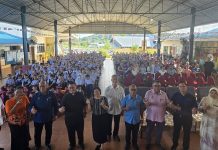
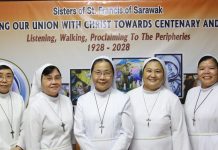
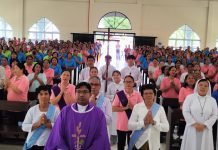
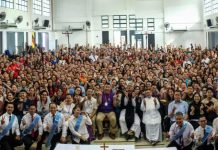
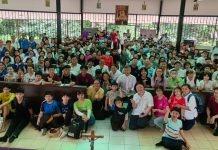

、尤金·玛格拉桑神父(Fr-Eugene-Maglasang)(前排右八)及叶祥胜神父(前排右十)于2025年1月25日在圣体堂合影。(摄影:蔡彼得).jpg)
